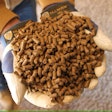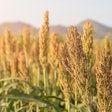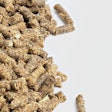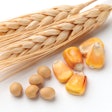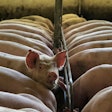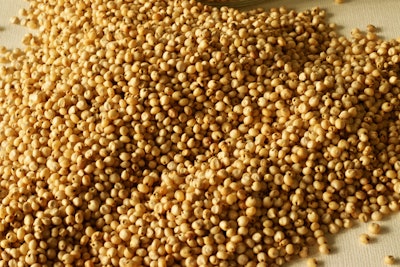
Grain sorghum is an increasingly viable option for pig feed, owing to its nutritional benefits and adaptability. However, its successful use depends largely on how it is processed and stored. Ensuring the right particle size for each pig stage, optimizing the pelleting process and maintaining proper storage practices can greatly enhance performance and profitability in swine operations.
The role of particle size in pig nutrition
Particle size is a crucial factor influencing feed intake, digestion and nutrient absorption. A finely ground grain sorghum enhances nutrient availability for piglets, while coarser particles promote gut health and reduce grinding costs in older pigs. The optimal particle size varies by age and purpose:
- Piglets (up to 8 weeks old): 600-700 microns
Young pigs need finer particles to maximize digestion and nutrient absorption. - Growers (8-16 weeks old): 700-900 microns
A moderate grind size balances feed efficiency with gut health. - Finishers (16 weeks to market weight): 800-1000 microns
As pigs mature, their digestive systems can handle larger particles, reducing grinding expenses without performance losses. - Breeders (mature pigs): 900-1000 microns
Coarser particles reduce energy costs for grinding and prevent ulcers and improve gut health.
When logistical constraints prevent using multiple grind sizes, 700 microns can serve as a universal compromise, balancing efficiency and nutrient uptake across all pig stages.
The starch factor: Sorghum vs. corn in pelleting
Grain sorghum’s starch composition is distinct from that of corn, affecting its behavior during pelleting. Grain sorghum has higher levels of amylose — a linear polymer — compared with corn, which has more amylopectin, a branched polymer. These differences influence gelatinization, a key process in forming durable, high-quality pellets.
Starch composition and gelatinization
Amylose requires more heat and moisture to gelatinize, making it more challenging to achieve the same pellet texture and durability as corn under identical processing conditions. To address this, adjustments to the pelleting process are essential, including:
- Conditioning time: Extending the duration allows more thorough starch hydration and heating.
- Temperature control: Higher and more precise temperatures improve gelatinization.
- Moisture management: Ensuring optimal water content enhances pellet cohesion.
For producers selling feed on the open market, achieving hard, durable pellets may be crucial. However, it's worth noting that overly hard pellets are unnecessary for most animals, including pigs, where pellet digestibility is more important than hardness.
Effective storage practices for grain sorghum
Storage conditions can significantly affect grain quality from harvest to usage. Grain sorghum has certain advantages over other common feed grains, such as corn and wheat, when it comes to storage stability.
- Moisture content: Grain sorghum can tolerate slightly higher moisture levels than corn or wheat during storage. However, all grains require low moisture conditions to minimize the risk of mold growth and spoilage. Aim for moisture levels below 14% to ensure long-term storage stability.
- Pest resistance: Grain sorghum’s tough outer layer provides natural protection against pests, making it less attractive to insects and rodents than corn. While wheat is also more resilient than corn, grain sorghum often outperforms both in this area, reducing the need for intensive pest control measures.
- Fungal resistance: Grain sorghum is somewhat resistant to certain fungal infections but is still susceptible to mycotoxins under poor storage conditions. Maintaining a cool, dry environment is essential to prevent fungal growth in all grains.
Temperature sensitivity and storage life
Grain sorghum exhibits greater tolerance to temperature variations than corn, which is highly sensitive to extreme conditions. This resilience, combined with proper moisture management, can extend grain sorghum’s storage life to be comparable to that of corn and wheat.
Grain sorghum, with its natural pest resistance and higher amylose content, offers opportunities and considerations for swine feed. By tailoring particle size to the needs of different pig stages, adjusting pelleting processes to accommodate grain sorghum’s starch profile, and maintaining optimal storage conditions, producers can maximize the efficiency and profitability of grain sorghum-based diets.








